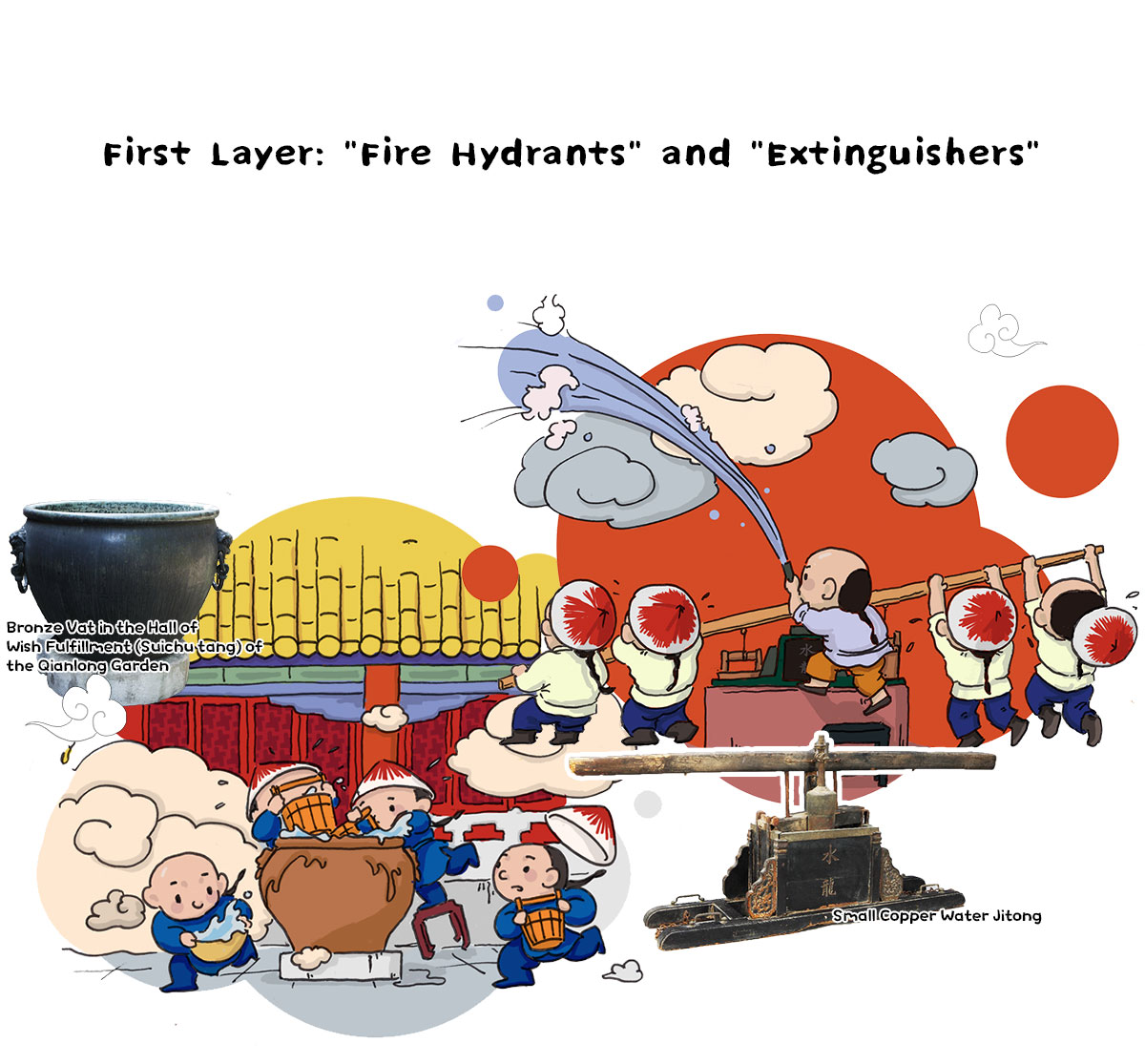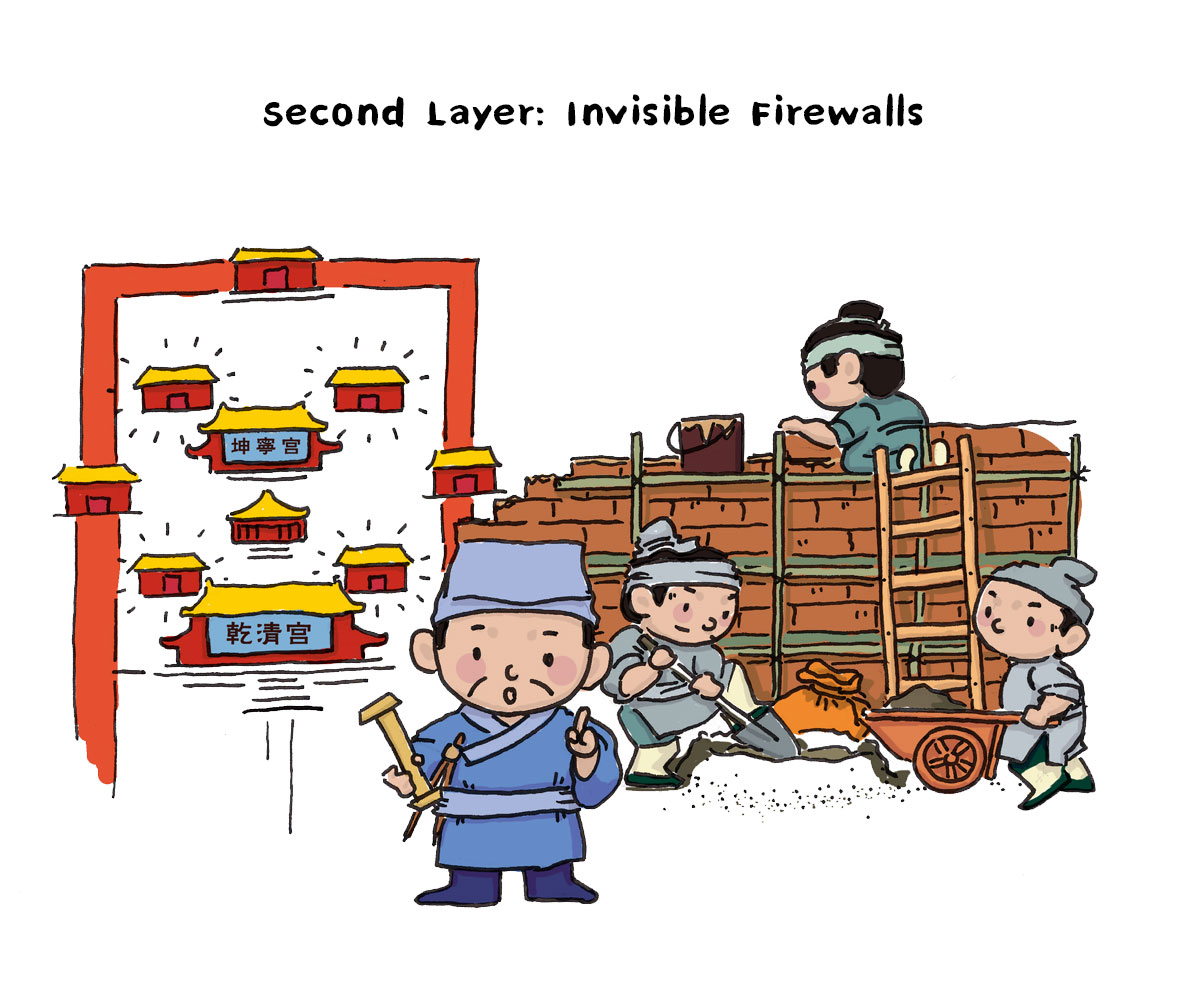Every autumn and winter, the air grows dry, creating a peak season for fires, which makes it essential to raise awareness about fire safety during these months.
Today, we pay great attention to fire prevention, but so did the ancients. In traditional Chinese architecture, where wood was the primary building material, fire posed an even greater threat. Take the Forbidden City, the largest extant complex of ancient Chinese architecture, as an example, it was equipped with three layers of fire protection.
When we think of firefighting tools, modern fire hydrants and extinguishers come to mind. But believe it or not, the Forbidden City already had its own versions of these hundreds of years ago. Just look at the large water vats scattered throughout the palace grounds. These 308 vats, mostly made of copper or iron, stand over a meter tall and wide each. They were used to store water for firefighting, rather than ornamental devices for growing flowers or raising fish.
In ancient times, unlike today, tap water was not readily available. Drawing water from wells or rivers during a fire would have been impractical, so preventive measures were crucial. These vats, tasked with safeguarding the imperial palace, earned auspicious names like “Peace Vats” or “Fortune Vats,” symbolizing wishes for peace and prosperity within the Forbidden City.
In addition to water vats, the Forbidden City also had a kind of firefighting tools known as jitong (“jetting buckets”), a device resembling a combination of a fire extinguisher and a water gun. It could draw water from the vats and spray it directly onto the flames.
Historical records show that over the Ming and Qing dynasties (1368-1911), there were more than 20 major fires in the Forbidden City. Yet, these fires occurred either in the inner court, north of the Palace of Heavenly Purity (Qianqing gong), or the outer court, south of it, but never spread over both courts simultaneously. Why?
On a December night in 1679, the young Emperor Kangxi (r. 1661-1722) was abruptly awakened by chaos. Summoning his attendants, he learned that a fire had broken out in the imperial palace. The fire started at the Imperial Kitchen, then quickly spread, and consumed the Hall of Supreme Harmony (Taihe dian) before it was extinguished by dawn. This disaster prompted the emperor to prioritize the establishment of a dedicated fire brigade. He ordered the recruitment of dozens of strong and capable eunuchs to form the fire prevention team, tasked with patrolling the Forbidden City and managing fire hazards—a precursor to the Imperial Fire Brigade.
This catastrophic fire left a lasting impression not only on Emperor Kangxi but also on the young Prince Yinzhen, who later succeeded to the throne as Yongzheng Emperor (r. 1722-1735). Although still an infant during the fire, the extensive reconstruction efforts penetrated throughout his childhood. When Emperor Yongzheng ascended the throne, he established a more professional fire brigade.
Unlike the previous eunuch-only fire team, Emperor Yongzheng’s brigade comprised Eight Banners officers and soldiers as well as imperial guards—100 men per shift—chosen for their physical strength, calm temperament, and firefighting expertise. Members were not entirely fixed but periodically rotated and reassigned from various places to ensure more personnel received fire training.
By 1729, the seventh year of Emperor Yongzheng’s reign, the Forbidden City boasted 1,288 trained “firefighters,” distributed across 37 guard stations, each equipped with a full set of firefighting tools. This large network formed the backbone of the Imperial Fire Brigade in the Forbidden City.
The firefighting system established by Emperor Yongzheng profoundly influenced subsequent emperors. Emperors Qianlong (r. 1735-1796), Jiaqing (r. 1796-1820), and Guangxu (r. 1875-1908) consecutively refined the fire brigade structure, ensuring that over the 200 years thereafter, the Forbidden City was spared from the frequent fires that had plagued the Ming dynasty (1368-1644).



